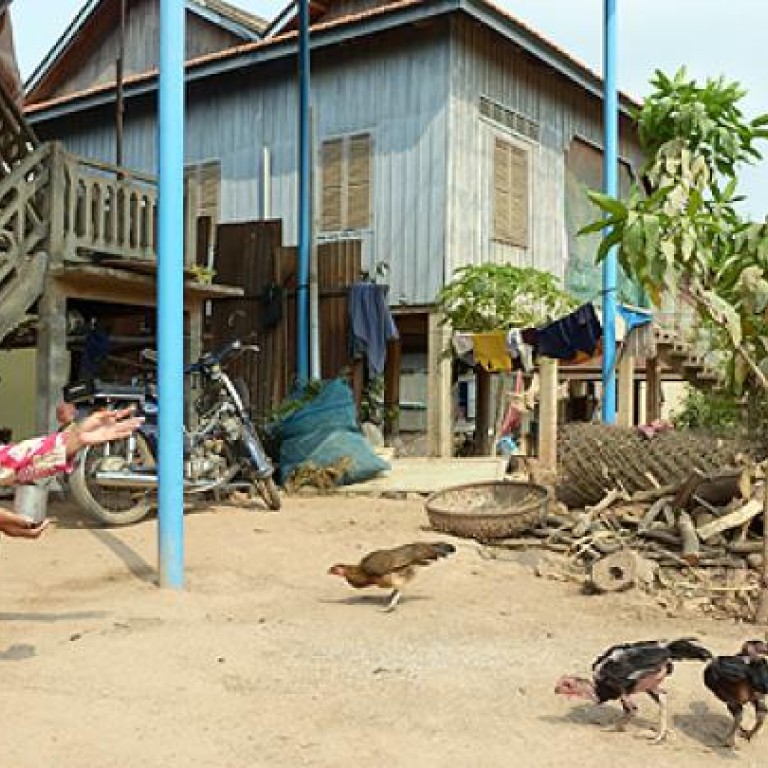
Cambodia fights surge in H5N1 deaths as Vietnam reports first death in 14 months
As China scrambles to contain a deadly new strain of bird flu, Cambodia is battling a spike in the better known H5N1 strain that is baffling experts a decade after a major outbreak began in Asia.
As China scrambles to contain a deadly new strain of bird flu, Cambodia is battling a spike in the better known H5N1 strain that is baffling experts a decade after a major outbreak began in Asia.
Bird flu has killed eight people so far this year in Cambodia, including six children, while more than 13,000 chickens have been culled or died from the highly contagious illness.
The impoverished kingdom is also nervously watching the spread in China of a new H7N9 strain that had not previously been transmitted from birds to humans, but has now killed seven people in China since February.
“We’re monitoring it. We’re constantly on alert,” Sok Touch, head of the Cambodian health ministry’s disease surveillance bureau, said of the new type.
So far the kingdom has not recorded any human cases of H7N9 and is focused on fighting the more common H5N1 virus, which has killed more than 370 people globally since 2003, according to the World Health Organisation (WHO).
The WHO says H5N1 carries a mortality rate among humans of around 60 per cent.
The current outbreak is Cambodia’s worst ever, accounting for nearly a third of its 27 human deaths from H5N1 since the virus emerged in the kingdom in 2005 following a spate of deaths in China and elsewhere in Southeast Asia that sparked international concern.
No scientific explanation has been found yet to explain the sharp rise in human victims this year. Last year three people died from H5N1 in Cambodia.
“There are some missing pieces in the puzzle and that’s why we are looking to see how this can be improved,” said Lotfi Allal, an animal expert at the UN Food and Agriculture Organisation in Cambodia.
People know about bird flu, but they don’t want to throw the birds away because they’re poor
Experts agree the country is particularly vulnerable because of the close proximity between humans and chickens, most of which roam freely in backyards, and a high rate of transportation of birds.
The country has an estimated 20 million poultry, with around 16 million kept in rural gardens.
Allal said currently there is “no incentive” for poor villagers to report dead birds, adding that the kingdom needs more “financial and human resources” to manage outbreaks.
The government is asking villagers to raise poultry in confined areas, but in many places their efforts are falling on deaf ears.
“People know about bird flu, but they don’t want to throw the birds away because they’re poor,” said Ouer Srey, 52, a villager in southern Kandal province who raises several chickens in her backyard.
“About two weeks ago, a lot of chickens died in my village. We don’t know what killed them, but some people ate the dead chicken,” she said.
Officials are scrambling to prevent new cases in the run-up to the Khmer New Year in mid-April when Cambodians travel home to the countryside and ducks and chickens are transported across the country for holiday feasts.
“We’re on alert because there is going to be a renewed movement of poultry,” said WHO spokesman Sonny Krishnan.
Experts say one particular challenge is that Cambodians who fall sick are often initially wrongly diagnosed with other illnesses such as typhoid or dengue fever.
“By the time these patients reach hospital, it is too late,” Krishnan said.
H5N1 causes a highly infectious, severe respiratory disease in birds. Humans can also be infected, typically through direct contact with sick poultry.
Some health officials have expressed concern about the lack of vaccination of poultry, a move that has been successfully implemented in several other countries in the region, including Vietnam.
But Allal said vaccinating the millions of chickens kept in people’s backyards is “not realistic”.
Instead animal health teams are carrying out enhanced surveillance, public awareness campaigns and training of local health workers.
While the WHO says that it is difficult to transmit the infection from person to person, the fear is that it might mutate into a form easily transmissible between humans.
The World Bank warns that a severe flu pandemic could cost more than US$3 trillion worldwide or 4.8 per cent of global GDP.

A four-year-old child has become Vietnam’s first victim of the H5N1 bird flu virus in more than a year, a health worker said on Tuesday.
“A test result confirmed the four-year-old boy was infected with H5N1,” said a staff member at the healthcare centre in Vietnam’s southern province of Dong Thap, which handled the case.
It was not immediately clear exactly when the child died and health officials in Hanoi were unavailable for comment.
It was Vietnam’s first fatality from the H5N1 virus since late January last year.
The boy, who was from a farming family, became unwell at the start of last week, the state-run newspaper reported.
After watching his grandmother kill a chicken, he developed a high fever and was admitted to hospital where he died, it said.
Hanoi last week banned all Chinese poultry imports and has stepped up border controls, including passenger temperature checks, in response to the new H7N9 strain in China.
According to the World Health Organisation (WHO), Vietnam has recorded one of the highest numbers of fatalities from bird flu in Southeast Asia, with 62 human deaths since 2003, including two last year.
